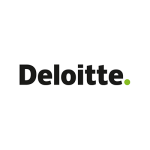Luxembourg introduced an IP box regime on January 1 2018 to align itself with international tax requirements and, more specifically, Action 5 of the OECD/G20’s BEPS project.
The regime adopted the ‘nexus approach’, under which research and development (R&D) expenses are considered an indicator of the activity necessary for the taxpayer to benefit from the preferential regime.
Innovation and R&D activities are top priorities for Luxembourg’s economic diversification strategy and IP regime which, due to compliance with the international standards, will help ensure global competitiveness.
The previous IP box regime was abolished on July 1 2016 because it was not in line with the nexus approach, but transitional rules allow the old regime to be maintained for five years, i.e. until June 30 2021. Although the two regimes will co-exist for several years, they cannot apply simultaneously, and a taxpayer election to apply the new regime is irrevocable.
As was the case under the old regime, an 80% exemption from corporate income tax and municipal business tax is available on the net adjusted and compensated income from qualifying IP rights and there is a full exemption from net wealth tax.
Qualifying IP rights include patents in the broad sense and copyrighted software, provided the assets were created, developed or improved after December 31 2007.
Qualifying income for purposes of the IP box regime is net income, defined as gross qualifying income less annual expenses related to the qualifying IP right. Additionally, the net income should be:
Adjusted: Net losses incurred during previous tax years on the eligible IP right must be taken into account as soon as the taxpayer is in a net positive income position (notably, negative IP income is a broad concept); and
Compensated: Negative adjusted qualifying net income on an IP asset must be compensated by any other adjusted positive qualifying net income generated by another IP asset held by the taxpayer.
The portion of net income that can benefit from the exemption is determined by application of the nexus ratio, computed on a cumulative basis, which establishes a direct relationship between the qualifying expenditure (numerator) and the overall expenditure (denominator):
Qualifying expenditure includes all R&D expenditure incurred by the taxpayer or an unrelated party in connection with a qualifying IP right, as well as R&D expenditure incurred by a permanent establishment in a European Economic Area country under certain circumstances. A 30% uplift applies to qualifying expenditure capped at the amount of overall expenditure.
Overall expenditure comprises qualifying expenditure, IP acquisition costs and payments made to a related party for R&D activities.
Documentation in line with the transfer pricing rules under BEPS Actions 8-10 must substantiate all transactions taking place within an intragroup context. Documentation also must justify the tracking of the eligible expense, total expense and eligible income in relation to each qualifying IP right.
In certain cases, the taxpayer may be able to use a product/service-based approach where expenditure and income are tracked and traced to products, services or families of products/services arising from qualifying IP assets.
This article was written by Thierry Bovier, Christophe De Sutter and Nathalie Taranti of Deloitte Luxembourg.












